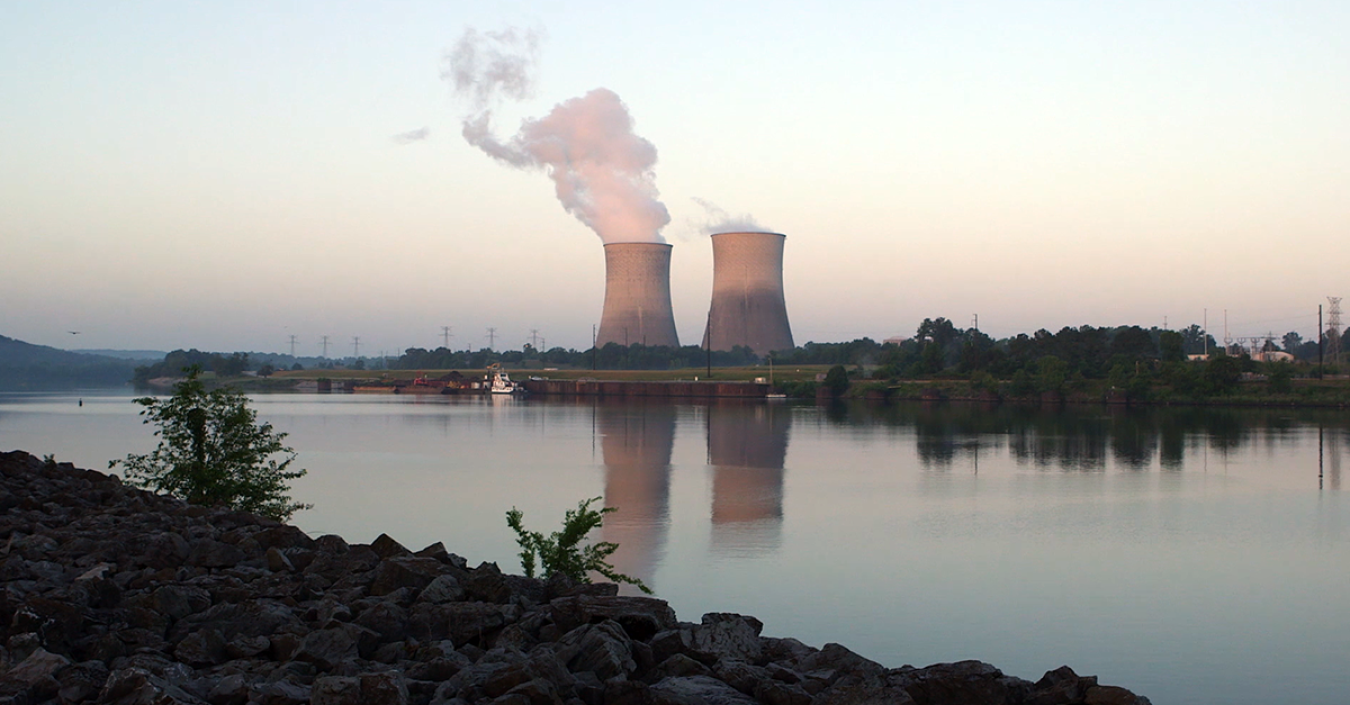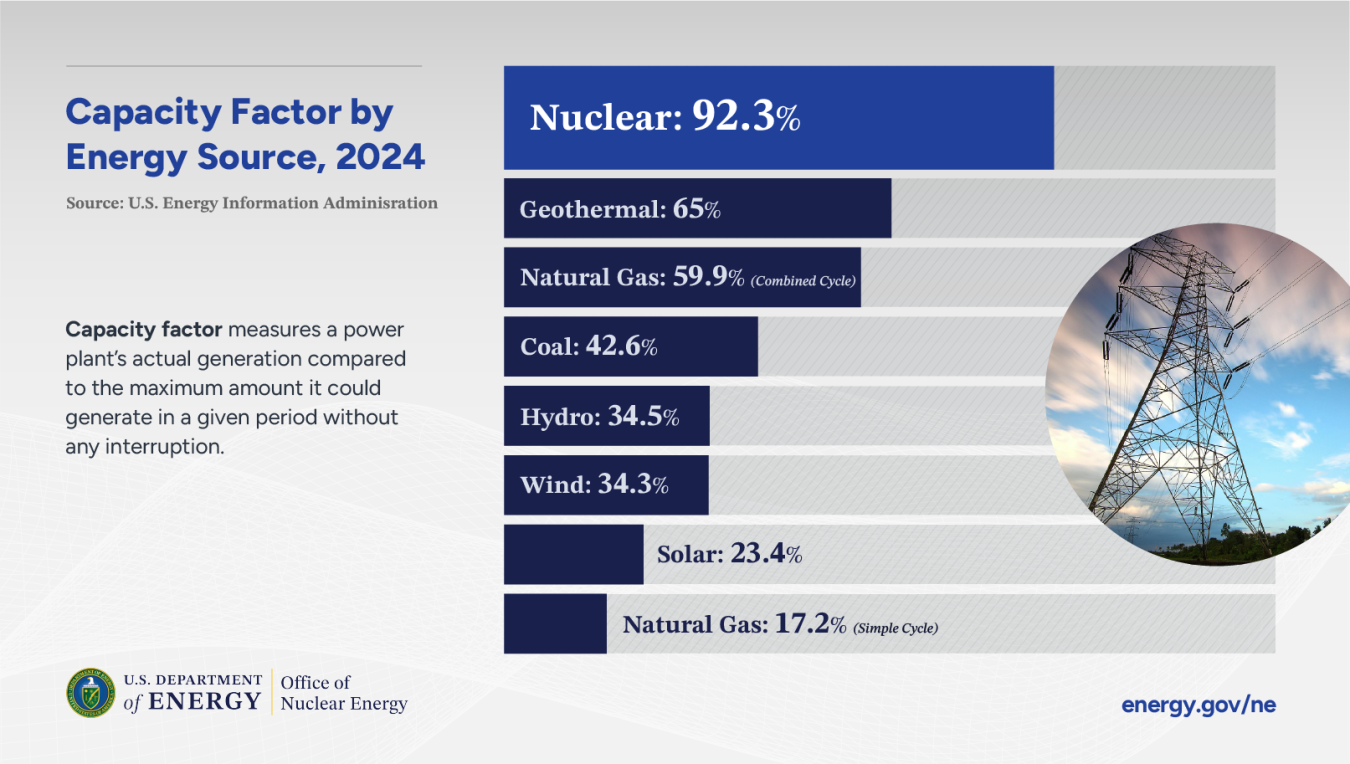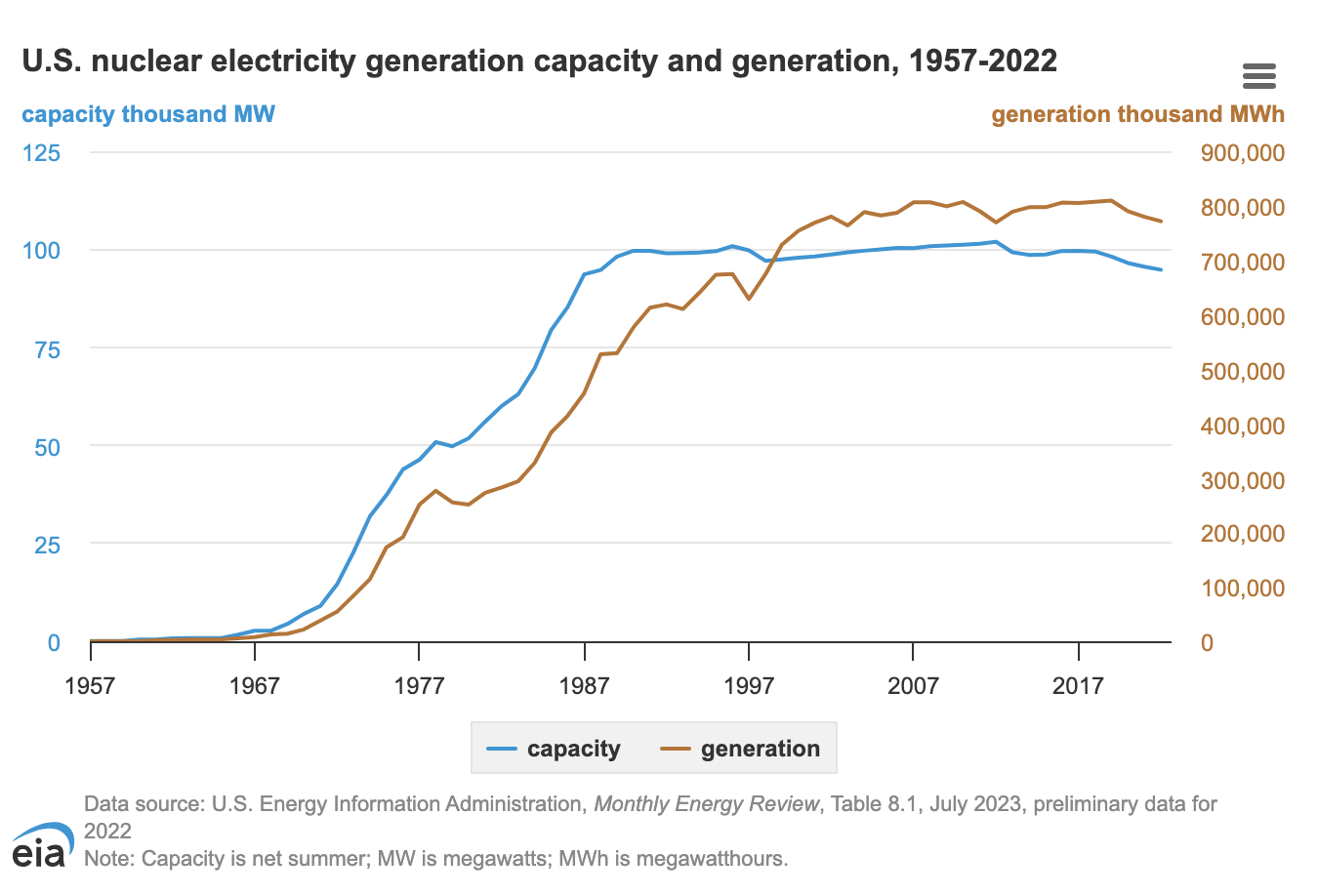Capacity is the amount of electricity a generator can produce when it's running at full blast. Learn more about this confusing energy term.
March 30, 2025The energy world can be a difficult place to navigate, especially if you’re not speaking the same language.
One term commonly thrown around is generation capacity.
This is essentially one way experts in the field can measure the growth of energy resources ranging from wind to nuclear power.
So what does it mean and how does it work?
Let’s break it down.
Capacity = Maximum Power Output

When it comes to generation capacity, think maximum power output.
Capacity is the amount of electricity a generator can produce when it’s running at full blast. This maximum amount of power is typically measured in megawatts (MW) or kilowatts and helps utilities project just how big of an electricity load a generator can handle.
U.S. nuclear generation capacity exceeded more than 99 gigawatts in 2023. That made up 8% of the country’s total capacity and also let us know the total amount of electricity all 54 U.S. commercial nuclear power plants were capable of producing that year.
*It’s important to note this is not the actual amount of electricity nuclear produced that year (18%), which we’ll get to in a bit.
Types of Capacity
There are typically three types of capacity measures according the U.S. Energy Information Administration:
- Nameplate generation capacity – Determined by the manufacturer of the generator
- Net summer generation capacity – Determined by performance tests during peak demand between June 1 – September 30
- Net winter generation capacity – Determined by performance tests during peak demand between December 1 – February 28.
These numbers are all different so it depends on which metric you want to measure.
For instance, summer generation capacity is typically lower than winter generation capacity for thermal power plants because colder water is better at producing heat than warmer water.
The Capacity Factor
Capacity factors allow energy buffs to examine the reliability of various power plants. It basically measures how often a plant is running at maximum power. A plant with a capacity factor of 100% means it’s producing power all of the time.
Nuclear has the highest capacity factor of any other energy source—producing reliable and secure power more than 92% of the time in 2024. That’s nearly twice as much as a coal (42.36%) or natural gas (59.9%) plant that are used more flexibly to meet changing grid demands and almost 3 times more often than wind (34.3%) and solar (23.4%) plants.
Capacity Is Not Electricity Generation
Capacity is not the same as electricity generation.
Power plants have a capacity to produce a certain amount of power during a given time, but if they are taken offline (i.e. for maintenance or refueling) then they are not actually generating power.
Nuclear power plants had a 8% share of the total U.S. generation capacity in 2023 but actually produced 18% of the country’s electricity due to its high capacity factor.
Get it now?
*Updated March 2025



